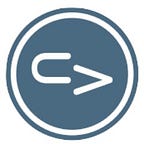What is a ‘Holistic Research Team’?
As the world evolves, so does the nature of occupations. Hitherto, being an expert in a certain field would just do the trick. However, in today’s world, we need interdisciplinary professionals who would be able to provide creative results. Don’t get me wrong, we still need experts on different subjects. However, the industry already has already many experts and is been already saturated. Hence as much as we need experts, revealing innovative and fresh ideas requires marrying this expertise with creativity.
Most traditional businesses, FMCGs, banks, insurance companies, etc. have been in the business for quite some time. Even their internet business counterparts have been dominating the world for some decades. Having worked with more than 50 Fortune 500 companies, all over the world for some time, we realized that most of them converge on similar insights and strategies after a while. And leveraging similar insights, they work on similar target audiences with similar marketing strategies.
To diverge from this rhythm, we have to complement experts with individuals who are able to tackle the same problem from a different perspective. Moreover, we are living in an omnichannel world. Hence researchers should be competent in 5 areas:
a) Human-computer interaction, (mostly revolves around UX)
b) How consumers individually feel and think, (mostly revolves around psychology)
c) How consumers think in a group (mostly revolves around sociology)
d) How to make all this data relevant for the industry (mostly revolves around strategy)
e) How to make this data easy to digest and understand (storytelling)
The word ‘Interdisciplinary’ by definition means melting two or more disciplines in a pot. This melting part differentiates multi-disciplinary individuals from interdisciplinary individuals. Multidisciplinary individuals have many different tools in their arsenal to tackle a particular problem and choose the right one for a certain situation.
As Maslow claimed, ‘If the only tool you have is a hammer, you tend to see every problem as a nail’
Interdisciplinary individuals on the other hand could mix and match these tools to create new ones.
Let me provide 2 concrete examples: Once we were working with an e-marketplace to optimize their information architecture. However, at their level of sophistication, a textbook method won’t provide significant value as they have been optimizing their operations with five-second tests, usability tests, and card sorting studies for many years.
However, the whole information architecture has been created on top of traditional standards by industry professionals, rather than consumers. At this stage, we recommended a study where we mix traditional card sorting (a method that is used regularly for UX purposes) with customer co-creation (a mostly qualitative method that is used regularly for design thinking purposes.) When building the whole information architecture from scratch, we have revealed innovation opportunities that none of the competitors were currently tackling.
In another case, we were working with an alcoholic beverages brand, and they were trying to target a younger audience. On the other hand, due to the surge in prices and many other reasons, the same audience is heavily involved with drugs. Of course, it is not convenient to discuss drugs in a focus group or in-depth interview where you are recorded. To solve this problem, one of our cultural anthropologists decided to conduct a whole study on dating apps. Through dating apps, consumers are fairly anonymous, and they are more than happy to talk about drugs. Our cultural anthropologist who is proficient in nethnography did a contextual analysis of the pictures of the individuals with whom she conversed, and combined this netnographic data with in-depth interviews/conversations to get a holistic understanding. This medium didn’t just make the whole conversation more honest but also combined these two different data sources greatly increased the depth of the data.
To sum up, mixing several different disciplines becomes an integral asset for today’s world, as differentiation and novelty are as important as expertise.
At Uservision we employ anthropologists, psychologists, sociologists, design researchers, strategists, and marketers. Instead of working in silos, every month we proactively ask for these individuals to learn from each other, so that they would be able to empathize and understand both to generate data from a different perspective and how differently data could be used.
